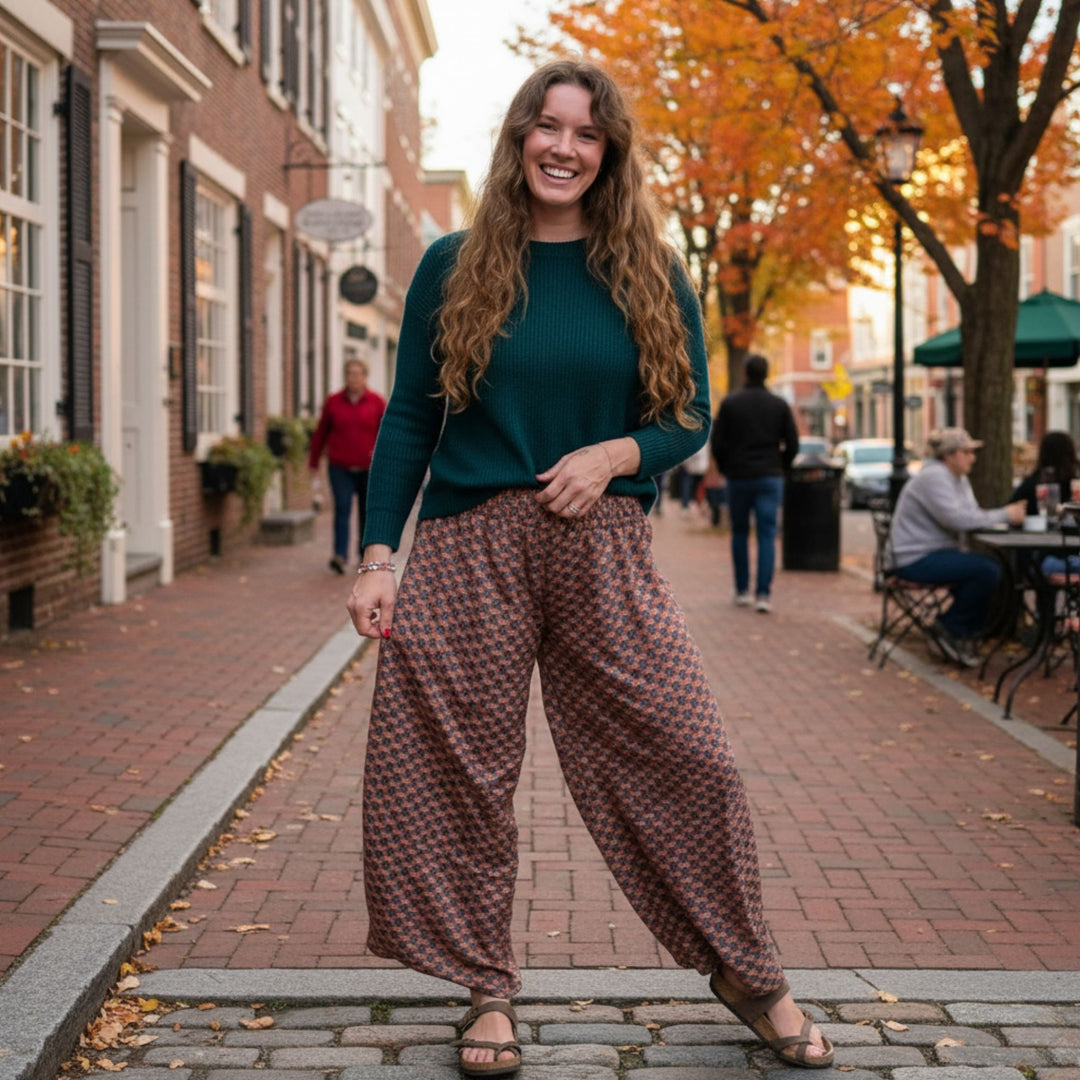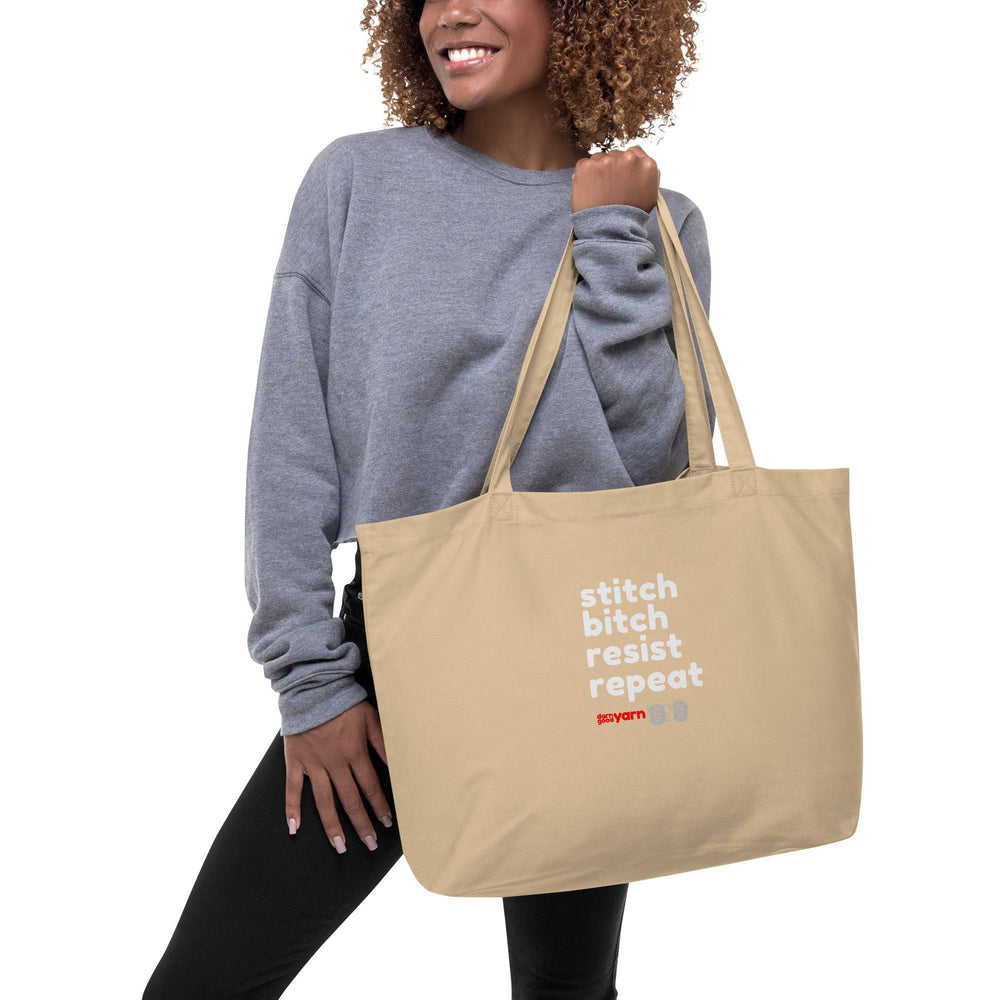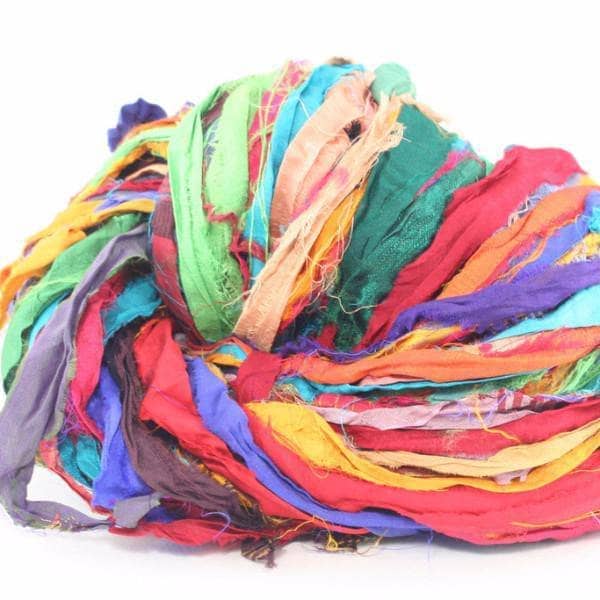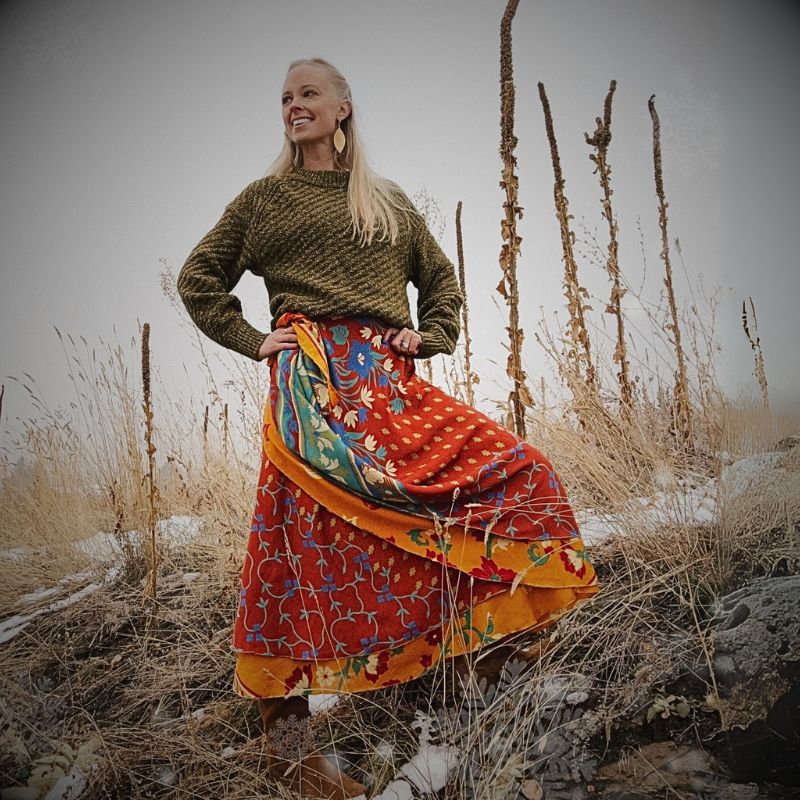There are many methods for casting on and binding off with knitting. I am only going to show a few options here because let's face it, we can all google these things. Mostly, I just want to give you some basic guidance. Be sure to start by getting some darn good yarn! Start with something basic like either a bulky or a worsted weight yarn because bigger yarns are easier to manipulate!
For example, I will say let's use a worsted weight recycled handspun and how about needles? Yes, there are so many options for needles! Some people love the aluminum because stitches slide, some like the circular that has a cord between each end.
I love many kinds depending on the project, but for general use I love the straight bamboo needles. Why? I like the feel of them and the look, too! So grab a pair of size 8 needles and your handspun and let's get casting (no, we are not going fishing)!

Cast On #1-Single Cast On
- Start by making a loop with the yarn.
- Bring the yarn through the loop, creating another loop with a knot at the end
Single Cast On
- Slide slip knot onto needle. Pull yarn to tighten knot.
- Wrap the working yarn (yarn connected to the ball of yarn) around your thumb so you have a loop around your thumb.
- Bring the needle under and up through the loop around your thumb
- Remove your thumb from the loop and pull the yarn
- Continue from step 2 until you have desired number of stitches casted on
Here is a great video visual from instructables.com

Cast On Method #2- Long Tail Cast On
I love the long tail method for casting on because I love how easy it is. It creates an even edge and it's easy to slide off your needles for your stitch row that follows.Once you get the hang of it, it's faster than Single Cast-On when you take into account that this method creates an already knitted row
In other words, using the Cast On Method, you will be knitting your first row at the same time you are casting on (technically, anyway…but patterns don’t count this row).
You will need to guesstimate how long you want your yarn tail to be but a good estimate is 12" of tail for every 20 stitches. The bulkier yarns will need longer tails as the tail will work up quicker.
Knittinghelp.com has a great tutorial video on the long tail cast on method. I think this will be more useful than me talking about why I love this method! One last note about this method-I have been known to run out of the tail end of the yarn so you may want to try gauging it with your yarn and needles.
Loosey Goosey
Tension is something you will learn about when knitting. Casting on too tightly means you can't knit the stitches but I have a few suggestions! Cast on over two needles and you will get a looser cast on edge or (my personal favorite), cast on with a size larger needle than pattern calls for and then swap out to smaller needle size after you have cast on...easy and I love easy!
Binding Off or Yeah! I'm Done
So there are many ways to bind off and again, I think the visual will be most useful to you. Rather than show you many methods for binding off, watch this for the basic bind off stitch video . The options are endless and here are eight popular methods for casting on and binding off from onlineread.com.
And my best idea on this? I love Cast On, Bind Off because I can hold this great book in in my lap while I figure out what the hell I'm trying to do! This book is excellent and has levels from basic all the way to complicated methods for casting on and binding off.
Here at Darn Good Yarn, we love to support you in your yarn endeavors. We'd like to thank all the amazing people out there on YouTube and elsewhere who are helping the world learn the joy of creating. We love to make videos, too, and I have to say Nicole is a comedian;) and she intends to make lots more videos!
Have you seen any of the Darn Good Yarn videos?
 Rewards
Rewards
























